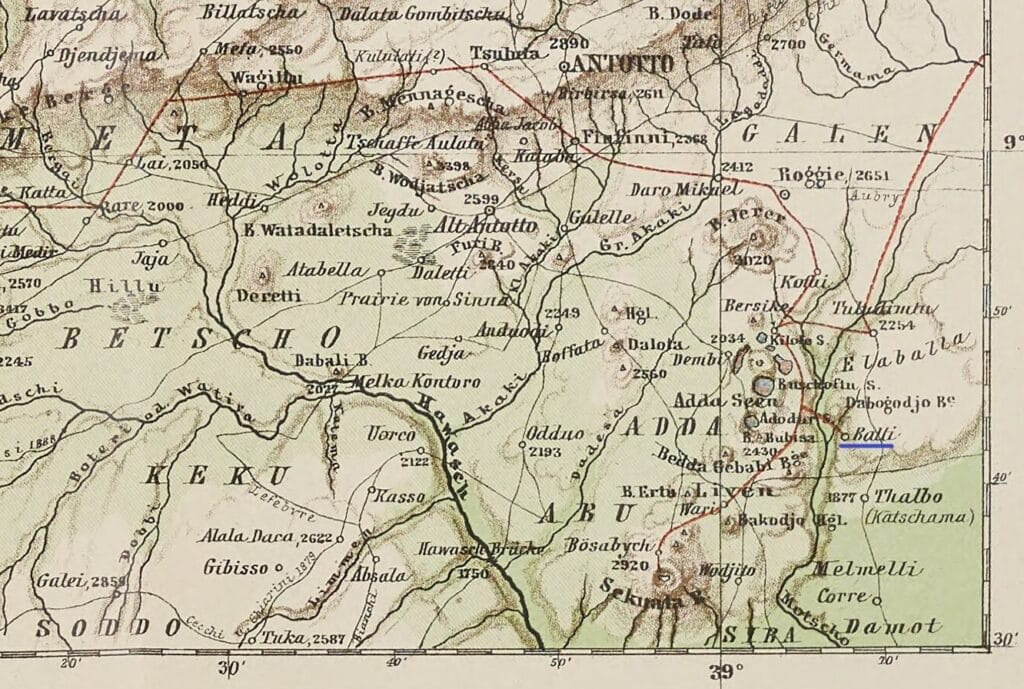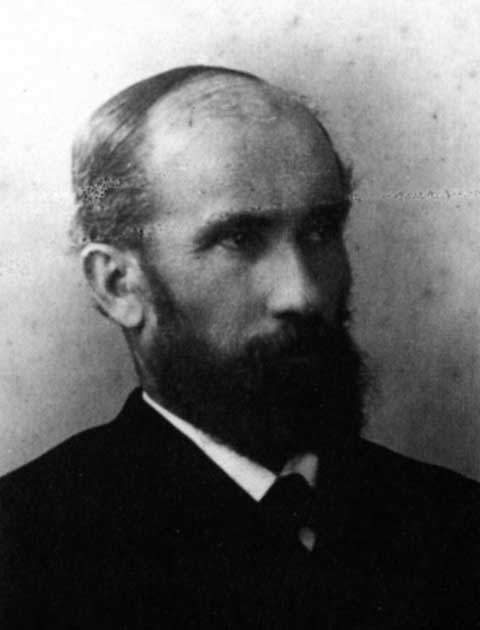Chronological overview of Greiner’s life and ministry
Organised according to data presented by Greiner, Arén and Menzel (s. bibliography).
1842‒63: Growing up in Southern Germany
1842: Johann Jacob Greiner was born as son of the Mayor of Brombach (Lörrach) near St. Chrischona. His pastor was the revivalist Rev. Ledderhose.
1863‒64: Study at St. Chrischona
1863/64: Study at the St. Chrischona Pilgrim Mission’s training institute near Basel (Switzerland).
1865‒70: Serving on the “Prophets’ Road“
1865: The Pilgrim Mission urgently sought candidates to reach the Oromos via the White Nile (“Prophets’ Road” Project). Greiner broke off his studies and travelled to Cairo to learn Arabic.
1866: Greiner established a school in Alexandria.
1867ff: Travel to Khartoum. The subsequent trip to the Oromo areas was cancelled due to the death and illness of colleagues. Greiner established a school in Khartoum.
1870/71: He returned to Alexandria and taught at the mission’s school.
1871‒72: Completion of studies at St. Chrischona
1871/72: Greiner completed his studies at St. Chrischona.
Dec. 1872 to Jan. 1874: Travel via Tadjourra and Warra Illu to Ankober, then the capital of Shewa (until Alexandria together with Mayer, Jaagan, and Gäbrä Maryam)
1874‒79: Teaching Oromo children and
work for King Menelik in Ankober
1874 ff.: As King Menelik did not yet allow the St. Chrischona missionaries to travel further south, Greiner prepared himself for his later ministry by teaching liberated Oromo children. However, he was not able to teach for many hours as the king assigned him a lot of technical work.
Greiner taught the following subjects (according to his letter in Mittheilungen aus der Correspondenz, 1875, p. 21):
- religious education and biblical history [in Oromo]
- reading, writing, and arithmetic [in Oromo, Amharic, and German]
- singing [in Oromo and German].
1877: Greiner married a Christian Oromo woman. Unfortunately, she died of smallpox half a year later.
1879: Marriage to Lydia Mayer, a daughter of Johannes and Sara Mayer (previously known as Workenesh). Greiner and his assistant Joseph Gallu [Qubee: Yooseef Gaaluu] completed the Oromo version of Barth’s Bible Stories. Their translation project had began in 1875 and the book was printed in St. Chrischona in 1880/81.
1880‒86: Teaching Oromo children, Sunday services
and farming in Balli

(Detail of a map of Dr Adolf Stecker’s journey in 1882
[publ. by Fritzsche in 1891])
1880: Johannes Mayer, Greiner, his colleagues and a few former students moved to Balli (Ada area), where the King had made a wild piece of land available to them. They offered school lessons in Oromo.
- The group could not devote as much time to school and missionary work as they would have liked, as they had to cultivate the land, provide for themselves and do some work for King Menelik.
1884/85: Gobaw (i.e., Gebru Desta) joined the team. He taught at school and helped with the Sunday services.
1886: The Protestant missionaries were asked to leave the country . On his way home, Greiner was robbed of his luggage near Tadjoura. Greiner’s translation of the prophetic books of the Old Testament was lost, and probably also the manuscripts that Aläqa Zännäb left after his death in 1876.
1886‒87: In search of a new field of work
Greiner considered joining the Swedish Evangelical Mission. Eventually, he responded to a call of a new German mission, the Evangelische Missiongesellschaft für Deutsch-Ostafrika (alias Berlin III). One consideration, as with Johann Ludwig Krapf, was to reach the Oromos in Kenya.
1887‒97: Establishing mission stations in Tanzania
1887‒91: Greiner built a mission station in Dar es Salaam.
1892‒97: Greiner established a station in Kisarawe (for outreach to the Zaramo people).
1898‒1900(?): Recovery in Germany
Due to health problems, Greiner returned to Germany in 1898.
1900(?)‒05: Agricultural project in Tanzania
The German colonial administration then employed Greiner for an agricultural project in Minaki (near Kisarawe).
June 1905: Greiner passed away in Minaki.
Picture

Further reading
» View bibliography with links
Cross-references
» 2 Oromo hymns edited by Greiner
» Greiner, Letters published in St. Chrischona (1874‒75)